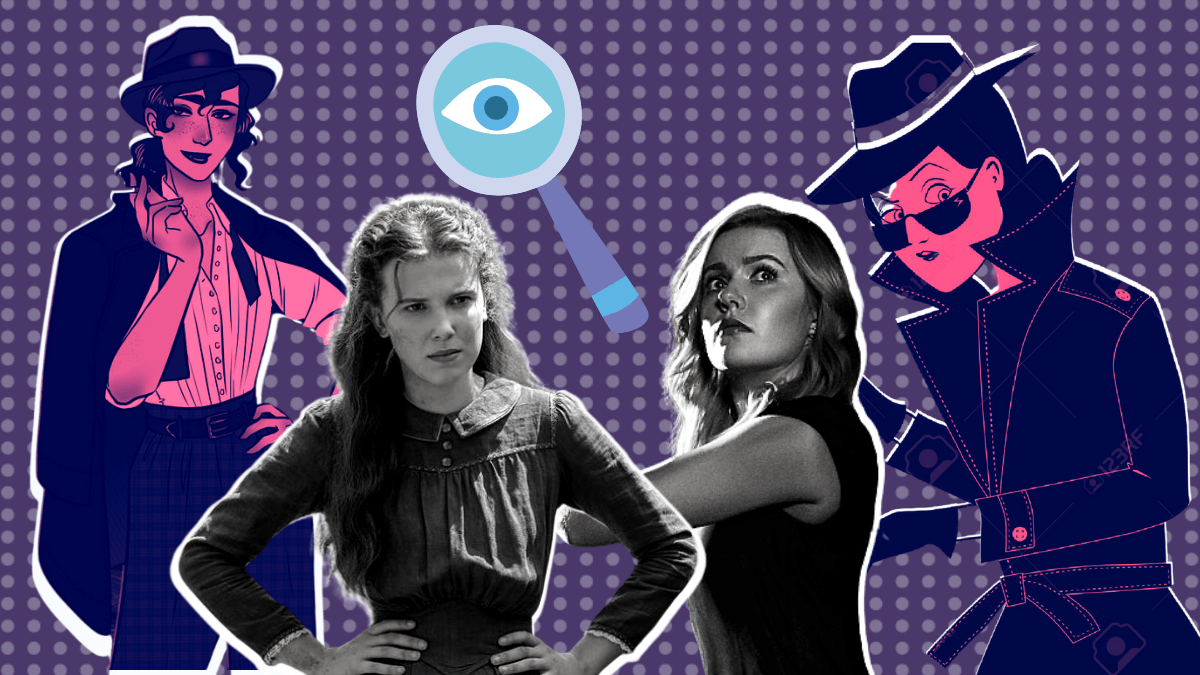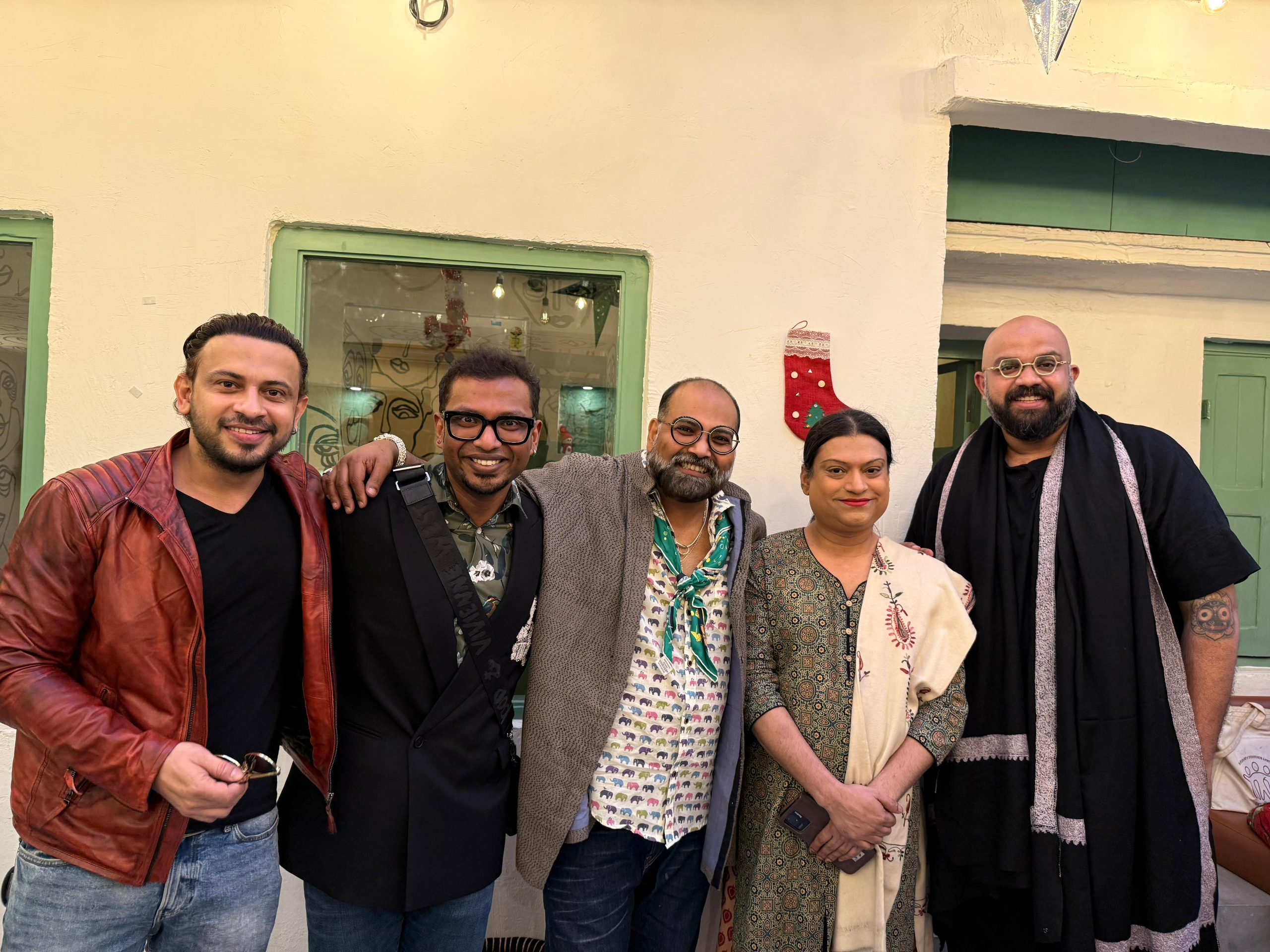Sherlock Holmes, Hercule Piorot, Tintin have one thing in common. Yes, they all are well-known detective characters from all around world of literature but that is not the only point of commonality between them. You may be wondering what is it then? The answer is very simple. They are all ‘male detectives.’ The next question that arises in your mind is, if they are male detectives, what’s the problem? Or to rephrase the question, is there a problem at all? Yes, there is an evident problem—there is a lack of female detectives in popular literature, both in world literature and regional literature which leads to a lack of ‘role-models’ whom young girls and subsequently the larger audience can look upto.
The presence of male hegemony in every field including literature has not left any space for the creation of female detectives. Back in 1893, the “Lady Detective”, Lovelyday Brooke had taken the world of crime fiction by storm. The brainchild of Catherine Louisa Pirkis, Brooke had challenged the Victorian ideals of both femininity and policing—a surveilling woman who went against the dominant conception of male gaze and power. However, this female detective character has been lost; we hardly know that such a character existed.
Brooke remained peerless for a long time, she was later joined by Miss Marple. Another ‘female detective’ was Miss Phryne Fisher created by Deb Cox and Fiona Eaggger (based on author Kerry Greenwood’s historical mystery novels) who began her career in 1989. Yet, these gifted ladies have been denied their due respect in literature. One may argue that there are some known female detectives. Absolutely. But in comparison to the plethora of male detectives in popular literature one can recall names of only two popular female detectives— Miss Marple and Nancy Drew. Unfortunately, Nancy Drew or Miss Marple, for that matter none of the female detectives in literature, do not enjoy the same popularity that their male counterparts enjoy.
Their only crime? Their gender identity.
One may argue that there are some known female detectives. Absolutely. But in comparison to the plethora of male detectives in popular literature one can recall names of only two popular female detectives— Miss Marple and Nancy Drew. Unfortunately, Nancy Drew or Miss Marple, for that matter none of the female detectives in literature, do not enjoy the same popularity that their male counterparts enjoy.
Why Such A Lack of Female Detectives?
In the 18th and 19th century, the very idea of a woman working as a detective in any city of any part of the world was unimaginable. Working women in the early 18th and 19th centuries who worked outside the “domestic sphere” were naturally considered to be predisposed to crime. This preconceived notion not only prevented women from working outside their homes but also acted as an impediment in the road towards the creation of a female detective character in literature.
While time has quickly passed from that stage and stepped into the modern century, our idea of a detective has become stagnant. We have only learned to associate detectives with the word ‘male’. The other reason also being that rational thinking for centuries was perceived to be the sole possession of men. In the book, Reinventing Womanhood (1979), Sociologist Carolyn G. Heilburn had stated that “women have been too content to accept their natural dependency on men.” This dependency has caused women and the society at large to let the status quo remain in certain domains, and detective fiction is one of them. There were no female police officers in the Metropolitan London Force until 1915, let alone other developing cities.
What is surprising is that female authors like Agatha Christie despite being a woman herself prefer to have male protagonists. But the integral question remains why?
Firstly, there are certain common characteristics one associates when one hears the name ‘detective’. These include, a man, tall probably someone six-feet or above, smoking a cigarette, should have an assistant or companion to aide in his work, should be witty and extremely intelligent, good in sports or at least should possess fighting skills and ideally should possess a weapon, either a pistol or a revolver. Now somehow these characteristics cannot be imagined in the case of a female detective.
Why so?
To begin with, a woman smoking a cigarette has somehow been associated with her moral character. On the other hand, a man smoking a cigarette is considered to be a part of his masculine trait—the picture of man smoking a cigarette has somehow been associated with masculinity. However, a woman smoking is not acceptable. Secondly, who would be an assistant to a woman—a man being an assistant to a woman will demean a man’s position in society. A detective without an assistant would be incomplete.
Clothes also played an important role which played a role in preventing writers from creating a strong female detective. When Sir Arthur Conan Doyal, the creator of Sherlock Holmes began writing in the early 1800s, women in Victorian England wore full sleeved gowns. A woman wearing layers and layers of clothing would not be able to have the same flexibility as a man wearing trousers and shirt. Literature reflects our reality and at that point a woman wearing “men’s clothing” could not be imagined. Without the flexible clothing there would be no fight sequence—a sequence of a male detective being engaged in a street fight with their opponents were considered to be brownie points in a story and would ensure that the storyline becomes more gripping. However, readers would not be interested in reading about a woman fighting shoulder to shoulder with men on the streets. The even more essential question was how will she fight!
Another important point is that a male detective is supposed to be charming and to some extent cocky in the manner he conducts himself. However, for a woman who is beautiful and uses her charm and wit to get her way is a strict no-no. A woman as always prescribed by society should be docile and silent with no voice of her own.
A very interesting point to note here is that most of the male detectives from Sherlock Holmes, Hercule Piorot, Tintin all are unmarried. You might be wondering how a male detective character being a bachelor has got to do with the lack of female detectives? Well, a bachelor man exhibits the notion that a ‘free man’ is much more easily able to contribute his time to rational thinking. On the other hand, an unmarried woman is an eyesore in the society’s eyes. The male detectives were intentionally kept unmarried to increase the character’s appeal.
While time has quickly passed from that stage and stepped into the modern century, our idea of a detective has become stagnant. We have only learned to associate detectives with the word ‘male’. The other reason also being that rational thinking for centuries was perceived to be the sole possession of men.
The Solution
Could there be a solution to this problem?
Could a docile yet intelligent female detective who abides by the society’s laws be created?
The answer to this question was to make the female detective a sweet old lady just like Miss Marple. Miss Marple was introduced to the readers in 1930 when she was sixty-five years old. Another solution that was adopted was to make the detective a teenager as in the case of Nancy Drew. Nancy Drew, was introduced to us readers when she was sixteen years old in the book, “The Secret of the Old Clock.” Nancy Drew, along with her friends George Fayne and Bess Marvin solved mysteries around the town.
What is common about Miss Marple and Nancy Drew are that they both are spinsters and to a large extent conform to the standards of society. Though Nancy Drew had become involved in cat mouse chase with men twice her age and managed to solve the crisis on her own, she maintains all the characteristics of a “good woman”. She does not smoke a cigarette and is very young and her assistants are her female friends. Miss Marple is a sweet old lady and she too conforms to the societal standards—she does not fight with men, nor smokes a pipe. When she challenges a man’s intellect she does it in a subtle manner. Though her wit is razor sharp, her tongue is sweet as honey—an important ladylike quality.
Also read: Netflix’s Unbelievable Highlights The Victim’s Perspective
Bengali literature too has been plagued with similar problems. For example, Bengali literature has two most loved ‘male detectives’—Feluda created by Satyajit Ray and Bomkyesh Bakshi created by Saradindu Bandyopadhyay. Other popular detectives in Bengali literature include Kakababu by Sunil Gangopadhyay, Kiriti Roy by Nihar Ranjan Gupta. The ‘sleuths of bengal’ too are unmarried except Bomkyesh who is married and we also find mentions of his child ‘khoka’.
Bengali literature has one well known female detective, Mitin Mashi created by Suchitra Bhattacharya. But the narrative is dominated mostly by Feluda and Bomkyesh. Mitin Mashi fails to enjoy the same popularity as Feluda and Bomkyesh. Mitin mashi however is married and likes to cook. Her assistant is her niece Tupur, a school going child. Here the character of Mitin Mashi has been feminised in the typical way the society would want. These basic details often escape our eyes but when pondered upon lead to deeper meanings.
“The Times They A Changin” – Bob Dylan
Over the years we have seen several changes taking place around the world. Yet, there are several more that need to be changed. One of them is incorporating more people, and by ‘people’ not only women but also women of colour, non-binary people and people coming from different socio economic and cultural backgrounds. We need detectives who are diverse and do not confine our rational thinking to certain perceptions. In Feminism in Detective Fiction (1995) Glenwood Irons commented, “Women detectives created in the past thirty years are outgoing, aggressive and self-sufficient sleuths who have transcended generic codes and virtually rewritten the archetypal male detective from female perspective.” However, when it comes to popular literature, our perceptions and mindsets need to become more inclusive.
When it comes to the celluloid, as audience we have become more embracing to the very idea of a female detective. Our acceptance is seen in the rave reviews of the Netflix film, ‘Enola Holmes‘ recently garnered. Although stories about ‘Enola Holmes’ had long been written by Nancy Springer, it took a film after decades to accept a female detective with open arms. Even if small attempts are made we ourselves have somehow restricted ourselves to the idea that detectives should be like Sherlock Holmes or Hercule Piorot, especially in literature. It is time to change this prevalent narrative. So any new writer reading this, please think about it!
Also read: Feminism On The Screen: 10 Feminist TV Series Of 2019
Disclaimer: The author in this article has expressed her own views. She in no way means to demean any community, any author or character. She is also aware of the fact that Indian regional literature has several other detectives but due to space constraints she is unable to accommodate other examples of detectives from regional Indian literature.
About the author(s)
Srijani Roy is currently pursuing her Master's in Sociology from Jadavpur University. She is passionate about studying Gender related issues, issues pertaining to children and Human Rights. She has a wide range of experiences in non-profit work with several organizations in different capacities. When not working you will find her reading a book or sleeping.




